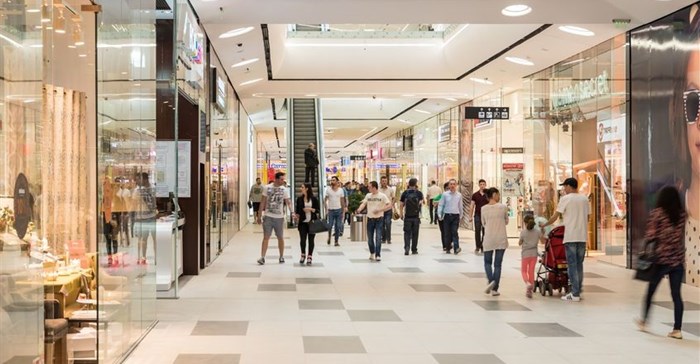Retailers, shopping malls power through festive spending binge
Consumers spend more over the festive period - not because of improved circumstances but mostly because of factors such as better marketing and relatively low interest rates, said Dawie Roodt, chief economist for the Efficient Group. Speaking to the South African Council of Shopping Centres (SACSC), he noted that new developments such as Black Friday have also contributed to the spending 'binge'.

Dawie added that 2018 may not be different to 2017 in terms of the economy. “I am afraid that although the past festive season may have been good, last year as a whole was quite dismal. The fundamental reason for this is simply weak economic growth that dampens job creation and wage increases.”
Attracting festive shoppers
Retailers and shopping centres have had to rethink strategies and sales campaigns to offer more to the ever-changing consumer. Some centres introduced innovative kids entertainment programmes to add excitement to the shopping experience.
Mall of Africa ‘brought the beach’ to Waterfall, entertaining families with authentic beach sand, water slides and pools. “From 9th to 23rd December, the park was transformed into a summer playground with activities for children of all ages. More than 17,000 families visited the beach,” said Michael Clampett, head of asset management for Mall of Africa. Over the December period, the centre experienced a 9% increase in visitors compared to the previous year.
Gateway Theatre of Shopping in KwaZulu-Natal reports that its Snow World activation was also a success. “Shoppers were able to voyage into a world of snow for the first time in Durban with ice slides, snow ramps, snow play area, a chilling arctic chamber, realistic animals of the Ice Age expo, to name a few. The activation was set up in the ex-Stuttafords premises and attracted over 55,000 shoppers,” said the mall's marketing manager Michelle Shelley.
Customers seeking value
Noel Otto, CEO of Power Fashion Factory said that 2017 taught the group about the lower LSM consumers and their significance. “Results demonstrated that Black Friday has been adopted by lower LSM consumers who are known to budget methodically and who will cherry-pick exceptional value offers.
"We learnt that we have to plan our stock for this calendar event as well as take December trade into account too, as it undoubtedly erodes year-end disposable income. Margins need to be reactive and relative, as price-check tools expose perceived value against exceptional value. Our most popular item sales suggested that as a category and across the board, kidswear is where the action was. Boy’s t-shirts proved to be an outstanding sub-category.”
Noel added that a trend he picked up on in 2017 was customers looking for value and to get more out of their money. “Customers are hunting out true value in fashion and goods on promotion, to push their hard-earned rands as far as they could go. This was observed from Black Friday and which seemed to be the continued customer expectation through the high season,” he concluded.
In a trading update for its year to December, Massmart reported a slight uptake in sales. For its 53-week period to end-December, total sales grew by 2,7% year-on-year. For 2017 sales rose by 1%. Comparable store sales dipped by 0,8%. The company noted that it had battled a weak economy. The group operates in 13 sub-Saharan countries in its four operating divisions. South African stores grew sales by a paltry 1,8% with comparable store sales down by 0,2%.